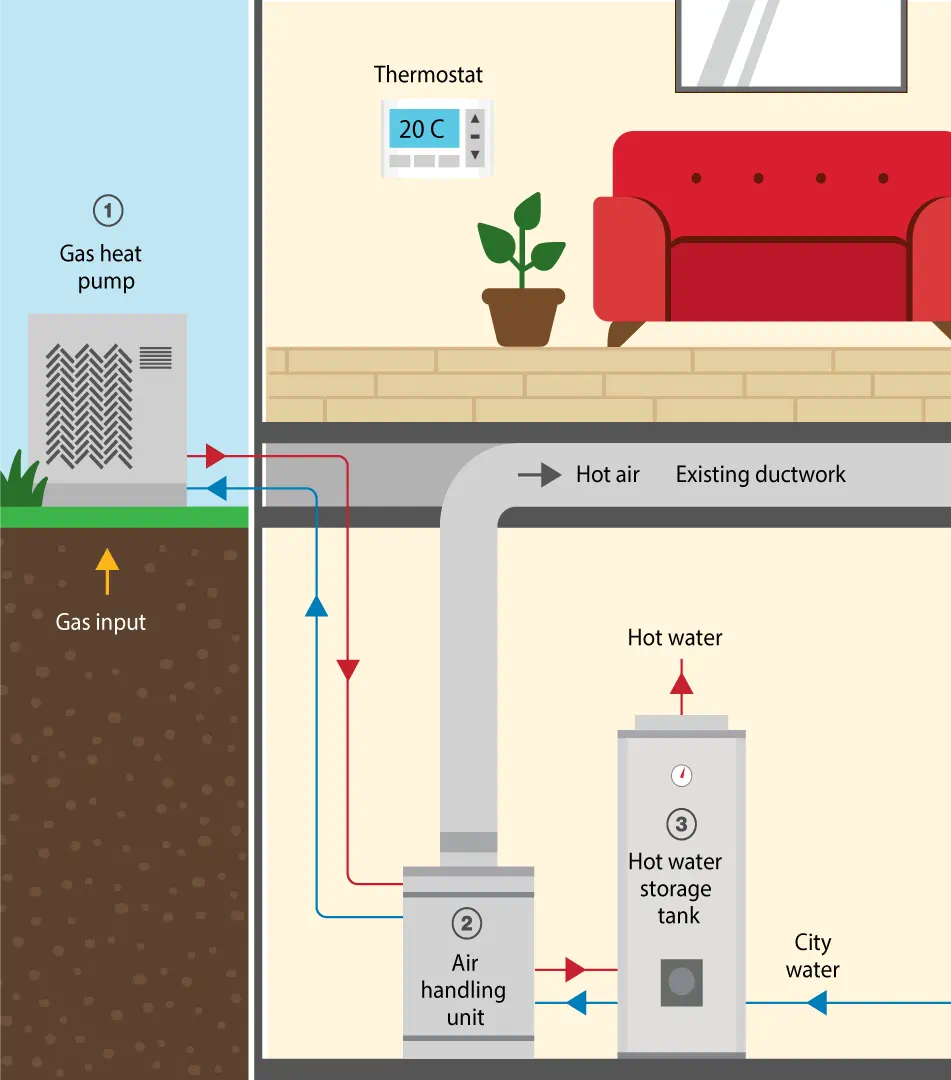More efficiency and savings. Lower climate impact.
Did you know that heat for buildings is the second largest source of greenhouse gas (GHG) emissions in Ontario?1
A residential natural gas heat pump system is an efficient, economical way to heat your home and water, helping you save more energy and lower your carbon footprint. With an annual fuel utilization efficiency (AFUE) of 140 percent2, a natural gas heat pump lowers energy use and greenhouse gas emissions compared to a conventional natural gas furnace or boiler.

How residential natural gas heat pumps support a clean energy future
Residential natural gas heat pumps can be a pathway to achieving net-zero emissions by 2050 as the natural gas distribution system is decarbonized with carbon-neutral fuels such as renewable natural gas.
A natural gas heat pump system consists of:

How do natural gas heat pumps work?
Are you eligible to sign up for $10,000 in rebate?
- To participate, you must be an Enbridge Gas residential customer in Bradford, Georgina, Hamilton, Newmarket, New Tecumseth, and Orangeville.
- Own a detached or semi-detached home.
- Heat your home with a natural gas furnace or boiler through a central duct system.
Additional terms and conditions may apply. Eligibility will be determined by a licensed participating contractor.
Want to learn more about the product and the technology?
Visit the participating GHP manufacturer to learn more about gas heat pump technology.
Or contact the manufacturer representative, Flow Sales, to learn more about gas heat pump technology and systems
Phone: 416-660-7123
Website: www.flowsales.com
Email: orderdesk@flowsales.com










